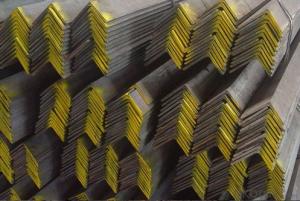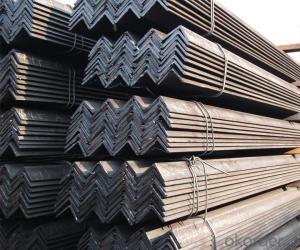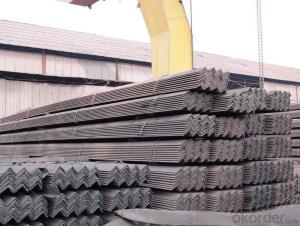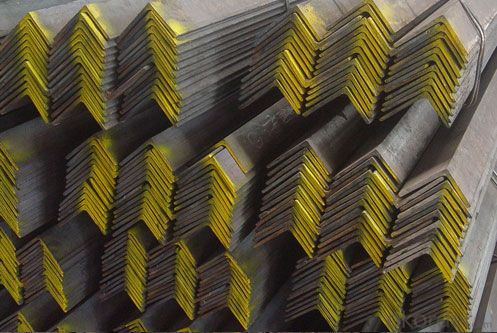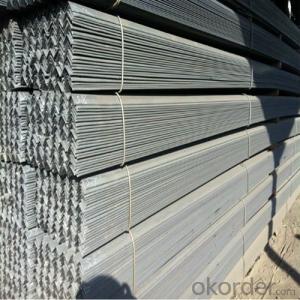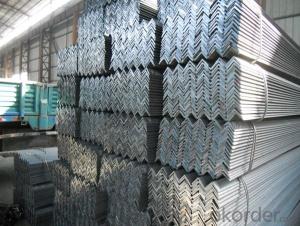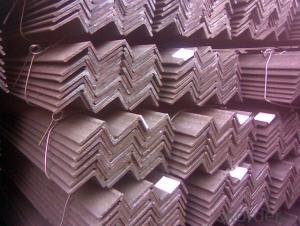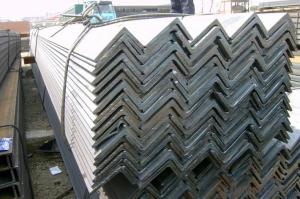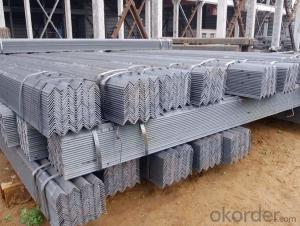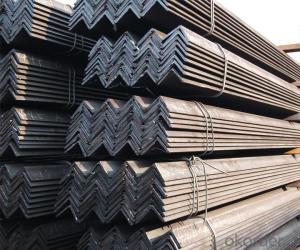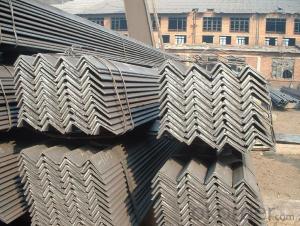Unequal Angles Hot Rolled, Standard Unequal Angle Steel
- Loading Port:
- Tianjin
- Payment Terms:
- TT or LC
- Min Order Qty:
- 30 m.t.
- Supply Capability:
- 40000 m.t./month
OKorder Service Pledge
OKorder Financial Service
You Might Also Like
Product Description:
OKorder is offering Unequal Angles Hot Rolled, Standard Unequal Angle Steel at great prices with worldwide shipping. Our supplier is a world-class manufacturer of steel, with our products utilized the world over. OKorder annually supplies products to European, North American and Asian markets. We provide quotations within 24 hours of receiving an inquiry and guarantee competitive prices.
Product Applications:
Unequal Angles Hot Rolled, Standard Unequal Angle Steel are ideal for structural applications and are widely used in the construction of buildings and bridges, and the manufacturing, petrochemical, and transportation industries.
Product Advantages:
OKorder's Unequal Angles Hot Rolled, Standard Unequal Angle Steel are durable, strong, and resist corrosion.
Main Product Features:
· Premium quality
· Prompt delivery & seaworthy packing (30 days after receiving deposit)
· Corrosion resistance
· Can be recycled and reused
· Mill test certification
· Professional Service
· Competitive pricing
Product Specifications:
Hot Rolled Steel Unequal Angles
1. Shape:Unequal
2. Standard:ASTM,BS,DIN,GB,JIS
3.Grade:Q195,Q235,Q345,SS400,A36,ST37
May we help you to optimize your products sourcing? | |
1. Strategic location: Our factory is located in the famous steel town of Shengfang. | |
2. Industrial product expertise | |
3. Product reliability, competitive price, and on-time delivery | |
4. Unparalleled service and reliability | |
5. Business philosophy: Credit First, Be Honesty, Mutual Benefit and Customer Supremacy. | |
Detail information: | |
Type | Equal & Unequal |
Thickness Tolerance | +/- 8% |
Packing | export standard packing(bundles, seaworthy package, shipped in container) |
Delivery Port | Tianjin, China |
Lead Time | within 30days after received the original L/C or deposit |
MOQ | 10 Tons per size |
Certificate | SGS Certificate if needed; the cost of inspection for buyer. |
Usage | Construction, communications steel tower, civil or agricultural machine making |
Production Capacity | 5,000MT per month |
Main Market | Europe, America, Africa, Southeast |
Welcome every old and new clients to come to negotiate and telecommunicate with us | |
FAQ:
Q1: Why buy Materials & Equipment from OKorder.com?
A1: All products offered byOKorder.com are carefully selected from China's most reliable manufacturing enterprises. Through its ISO certifications, OKorder.com adheres to the highest standards and a commitment to supply chain safety and customer satisfaction.
Q2: How do we guarantee the quality of our products?
A2: We have established an advanced quality management system which conducts strict quality tests at every step, from raw materials to the final product. At the same time, we provide extensive follow-up service assurances as required.
Q3: How soon can we receive the product after purchase?
A3: Within three days of placing an order, we will begin production. The specific shipping date is dependent upon international and government factors, but is typically 7 to 10 workdays.
Q4: What makes stainless steel stainless?
A4: Stainless steel must contain at least 10.5 % chromium. It is this element that reacts with the oxygen in the air to form a complex chrome-oxide surface layer that is invisible but strong enough to prevent further oxygen from "staining" (rusting) the surface. Higher levels of chromium and the addition of other alloying elements such as nickel and molybdenum enhance this surface layer and improve the corrosion resistance of the stainless material.
Q5: Can stainless steel rust?
A5: Stainless does not "rust" as you think of regular steel rusting with a red oxide on the surface that flakes off. If you see red rust it is probably due to some iron particles that have contaminated the surface of the stainless steel and it is these iron particles that are rusting. Look at the source of the rusting and see if you can remove it from the surface.
Images:
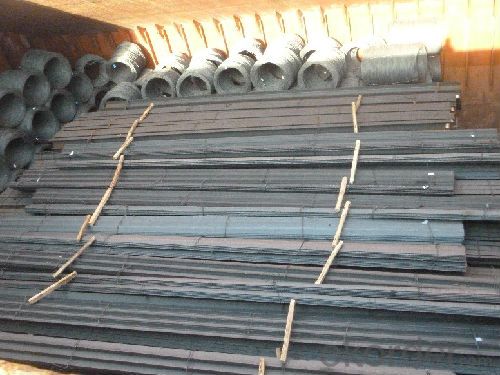
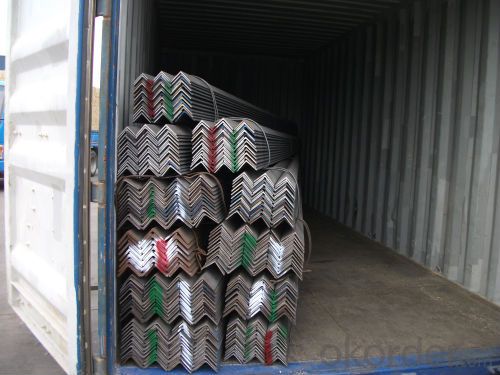
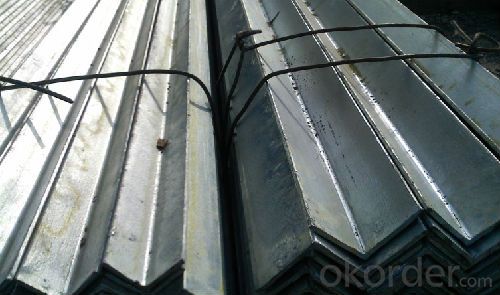
- Q: What are the different connections used with steel angles?
- There are various connections available for steel angles, depending on the specific application and structural needs. Some commonly used connections for steel angles include the following: 1. Welded connections: Steel angles can be connected through welding, where the edges of the angles are melted and joined using arc welding or MIG welding. Welded connections offer durability and strength, but they require skilled labor and may take time to complete. 2. Bolted connections: Another option is to connect steel angles using bolts. This involves drilling holes through the angles and inserting bolts, securing them in place with nuts and washers. Bolted connections are relatively easy and quick to install, and they allow for easy disassembly if necessary. However, they may not be as strong as welded connections and may require periodic inspection and tightening. 3. Riveted connections: Steel angles can also be connected using rivets. This involves drilling holes through the angles and inserting rivets, which are then hammered or pressed to secure them in place. Riveted connections offer reliability and strength, but they are less commonly used nowadays due to more efficient and cost-effective connection methods. 4. Clip connections: An alternative is to use metal clips or brackets to connect steel angles. These pre-fabricated clips are bolted or welded to the angles, allowing for easy repositioning or removal if needed. Clip connections are often used in situations where adjustability or flexibility is required. 5. Angle connections: In some cases, steel angles can be connected to each other using additional angles. These angles are typically bolted or welded together, providing increased strength and stability. Angle connections are commonly used in structural applications that require additional reinforcement or support. When selecting the appropriate connection method for steel angles, it is crucial to consider project-specific requirements such as load-bearing capacity, structural design, and maintenance. Consulting with a structural engineer or construction professional is recommended to ensure the most suitable connection method is chosen for the specific application.
- Q: Can steel angles be used for framing in modular homes?
- Yes, steel angles can be used for framing in modular homes. Steel angles are commonly used in construction for their strength and durability. They are versatile and can be used in various applications, including framing. Steel angles provide excellent load-bearing capacity and structural support, making them suitable for modular home construction. Additionally, steel angles can be easily fabricated and customized to meet specific design requirements. Their resistance to corrosion and fire also adds to their suitability for modular home framing. Overall, steel angles are a reliable and efficient choice for framing in modular homes.
- Q: What are the common applications of steel angles?
- Steel angles have a wide range of applications in various industries such as construction, manufacturing, and engineering. Common uses include structural support in buildings, frames for machinery and equipment, reinforcement in concrete structures, brackets and supports in construction projects, and as components in aerospace and automotive industries.
- Q: What is the maximum shear force for a steel angle?
- The maximum shear force for a steel angle depends on various factors such as the size, shape, and material properties of the angle. To determine the specific maximum shear force, it is essential to consult the relevant design codes, standards, or specifications that provide guidelines for calculating the shear capacity of steel angles.
- Q: How do steel angles differ from other structural shapes?
- Steel angles differ from other structural shapes in several ways. Firstly, steel angles have a distinct L-shaped cross-section, with two perpendicular flanges and a central web connecting them. This unique shape provides the angle with exceptional strength and load-bearing capacity, making it suitable for various structural applications. Secondly, steel angles are highly versatile and can be used in a wide range of construction projects. They can be easily welded, bolted, or screwed together to create complex structures such as frames, supports, and bracings. This flexibility makes them a preferred choice for engineers and architects. Moreover, steel angles are available in different sizes and thicknesses, allowing for customization based on specific project requirements. This variety in dimensions makes it easier to achieve the desired strength and stability in structural designs. Additionally, steel angles offer cost-effective solutions compared to some other structural shapes. Their efficient use of materials and manufacturing processes make them relatively affordable while still maintaining their durability and functionality. Lastly, steel angles can withstand significant loads and stresses, making them ideal for applications where structural integrity is crucial. Their ability to distribute weight evenly across the flanges and web ensures stability and prevents deformation under heavy loads. In summary, steel angles are unique structural shapes that provide strength, versatility, customizability, cost-effectiveness, and durability. These features make them an excellent choice for various construction projects, setting them apart from other structural shapes.
- Q: How do steel angles perform under cyclic or alternating loading conditions?
- Steel angles possess excellent performance characteristics under cyclic or alternating loading conditions because of their structural properties. The durability and high strength of steel are renowned, enabling angles to endure repeated loading without significant deformation or failure. Fatigue, a phenomenon that transpires when a material experiences recurring stress cycles, is observed in steel angles under cyclic loading. This leads to the accumulation of damage and potential failure over time. Nevertheless, steel has an exceptional fatigue strength compared to other materials, rendering it highly resistant to fatigue-induced failure. The performance of steel angles under cyclic loading is also influenced by their distinctive shape. The L-shaped configuration adds to their stability and ability to withstand bending or twisting forces. This form facilitates the dispersion of the load more evenly along the angle's length, reducing stress concentrations and enhancing its fatigue life. Moreover, steel angles can be reinforced using diverse techniques, such as heat treatment or surface hardening. These processes enhance the material's resistance to cyclic loading, making it even more proficient in enduring repeated stress cycles. In summary, steel angles are ideal for cyclic or alternating loading conditions due to their remarkable strength, durability, and fatigue resistance. Their L-shaped design and potential for reinforcement make them dependable structural components in various fields, encompassing construction, engineering, and manufacturing.
- Q: Are steel angles resistant to UV radiation or fading?
- No, steel angles are not inherently resistant to UV radiation or fading. Steel, by nature, is susceptible to oxidation and corrosion when exposed to UV radiation and atmospheric conditions. Over time, the UV radiation can cause the steel to fade, lose its luster, and develop a patina. However, steps can be taken to mitigate the effects of UV radiation on steel angles. Applying protective coatings, such as paint or galvanizing, can provide a barrier against UV radiation and help prevent fading. Regular maintenance and proper care can also extend the lifespan and appearance of steel angles when exposed to UV radiation.
- Q: Can steel angles be used as bracing elements?
- Yes, steel angles can be used as bracing elements. Steel angles are often used in construction as bracing elements due to their strength and stability. They can effectively provide support and enhance the structural integrity of a building or structure.
- Q: Can steel angles be used for manufacturing furniture?
- Indeed, furniture can be manufactured using steel angles. These angles possess versatility and durability, rendering them appropriate for a range of uses, including furniture production. They can be employed to fashion robust and stable frameworks, legs, and supports for an array of furniture items, such as tables, chairs, shelves, and cabinets. Renowned for their strength and structural soundness, steel angles are an exceptional option for furniture that must endure heavy loads or have an extended lifespan. Moreover, steel angles can be effortlessly welded, cut, and molded to meet specific design specifications, facilitating customization and fostering creativity in furniture manufacturing.
- Q: Can steel angles be used for bracing?
- Yes, steel angles can be used for bracing. Steel angles are commonly used in construction and engineering projects to provide structural support and reinforcement. They are versatile and can be easily welded or bolted into place, making them suitable for various applications, including bracing. Steel angles are typically strong and rigid, which makes them effective in providing stability and resisting lateral forces. They are often used to brace columns, beams, and other structural elements, enhancing the overall strength and stability of the structure.
Send your message to us
Unequal Angles Hot Rolled, Standard Unequal Angle Steel
- Loading Port:
- Tianjin
- Payment Terms:
- TT or LC
- Min Order Qty:
- 30 m.t.
- Supply Capability:
- 40000 m.t./month
OKorder Service Pledge
OKorder Financial Service
Similar products
Hot products
Hot Searches
Related keywords
